First Pictures: Green Roofs contribute to Biodiversity in Housing Developments
Housing developers working at Barking Riverside are using green roofs as part of an award winning green infrastructure plan for one of the largest housing development sites in London. Here are some first pictures of the installation, which completed this month.
Barking Riverside
Barking Riverside is the largest housing development in the Thames Gateway, and one of the largest development sites in London. The 185-hectare development, a complete new community of 10,800 homes, is being built on the site of Barking Power Station. (Image: Barking Riverside IHDC Competition Entry)
Urbanising a site like this would conventionally lead to a loss of biodiversity, so a green infrastructure strategy is normally part of planning requirements for new developments on brownfield land, and Barking Riverside is no exception.
Green roofs play a significant part in restoring a green infrastructure to a brownfield site, by bringing back the ecosystem that urbanisation traditionally takes away. This includes:
- Thermal insulation
- Stormwater attenuation
- Improved air quality
- Improved water quality
- A habitat for pollinators and decomposers
- Human contact with wildlife and green spaces
In the case of Barking Riverside the development Joint Venture aims to install green roofs on 50% of all the buildings on the site. The innovative sustainability master plan for Barking Riverside won an IHDC award in 2012.
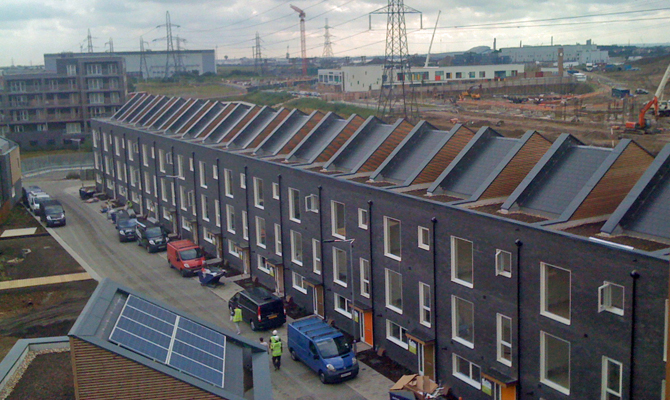
Selecting a Green Roof for Biodiversity
If you want to encourage biodiversity in your green roof, it is important to:
- Understand the ecology of the site and its environs,
- Look at the green roofs within this wider context, and then
- Tailor the selection of planting to suit the area and species you wish to encourage.
This means it is usually best to work with specialists, including landscape architects, ecologists and specialist green roofing designers to ensure you get the best advice.
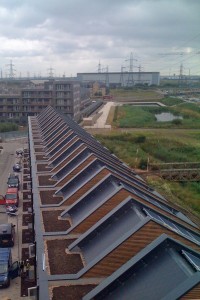 At Barking Riverside, the courtyard areas and community spaces adopt a SUDS management train approach to stormwater management. Rainwater is managed and biodiversity is supported using rainwater gardens, green roofs, balancing ponds and ditches, swales, rainwater harvesting and permeable pathways.
At Barking Riverside, the courtyard areas and community spaces adopt a SUDS management train approach to stormwater management. Rainwater is managed and biodiversity is supported using rainwater gardens, green roofs, balancing ponds and ditches, swales, rainwater harvesting and permeable pathways.
For the green roofs at City East (illustrated), the Blackdown Plug Planted Sedum System was used to provide green roofs to 50 homes and an apartment block.
SIG Design & Technology designed an inverted roof waterproofed with RhenofolCG. DATAC Accredited specialist roofing contractor Albany Brent Ltd installed a combination of hardy, succulent plug plants and native wild flowers at 20 plugs per m2.
Photographs here show the roofs just after installation in July 2013. From a 10% plant coverage rate when installed, full coverage is typically achieved in two growing seasons.
The system provides a cost effective green roof solution that encourages biodiversity without requiring additional structural capacity.
More information
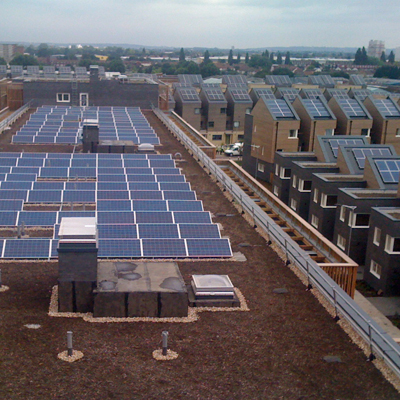 Download the Barking Riverside Case Study
Download the Barking Riverside Case Study
Find out more about DATAC Accredited specialist roofing contractor Albany Brent Limited
Read more about Barking Riverside on the GLA website.
Read about our Biodiverse Green Roof products
Download a Factsheet on Biodiverse Green Roofs
Visit our Green Roofing Downloads Page for other downloads.
Subscribe to receive our next post on the Roof Design Technical Blog.
Contact your nearest advisor, or get in touch for us to arrange a meeting.




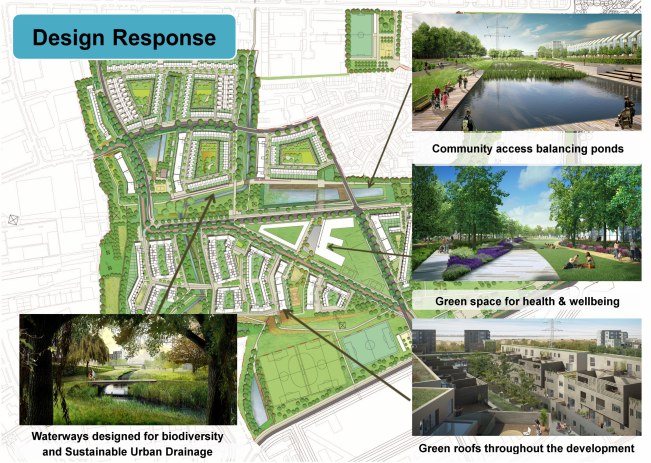
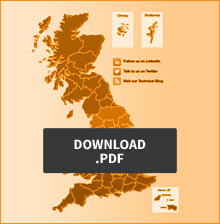








[…] recently completed Barking Riverside project is a biodiverse green roof, plug planted with sedums and native […]
[…] recently completed Barking Riverside project is a biodiverse green roof, plug planted with sedums and native […]